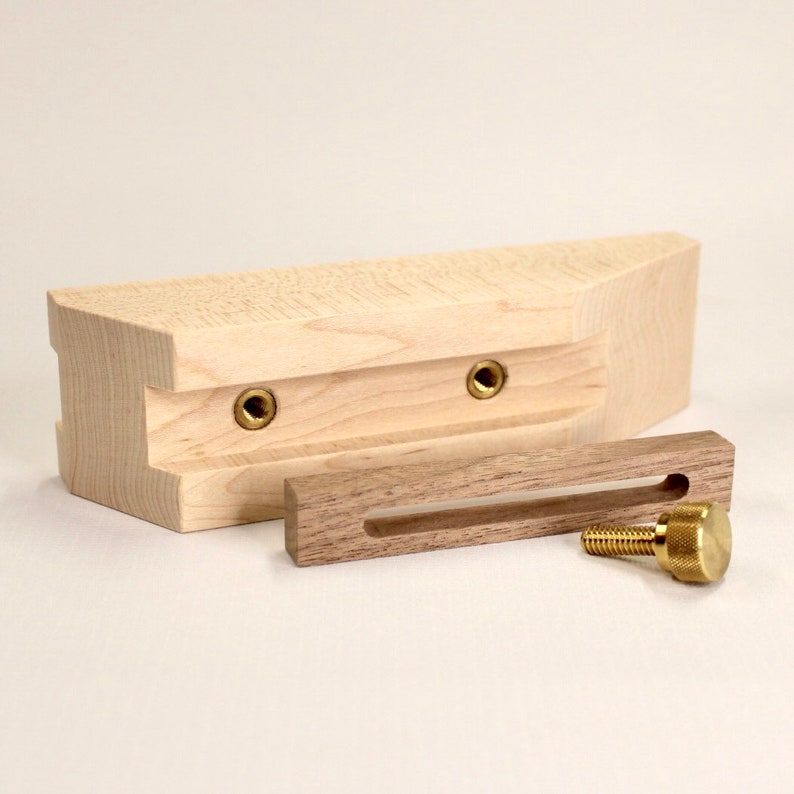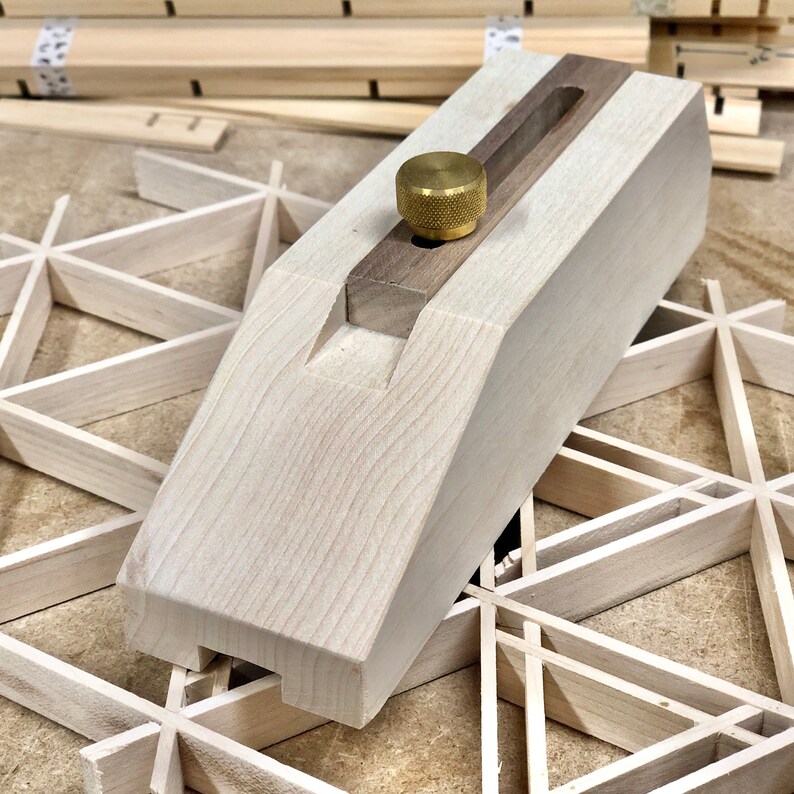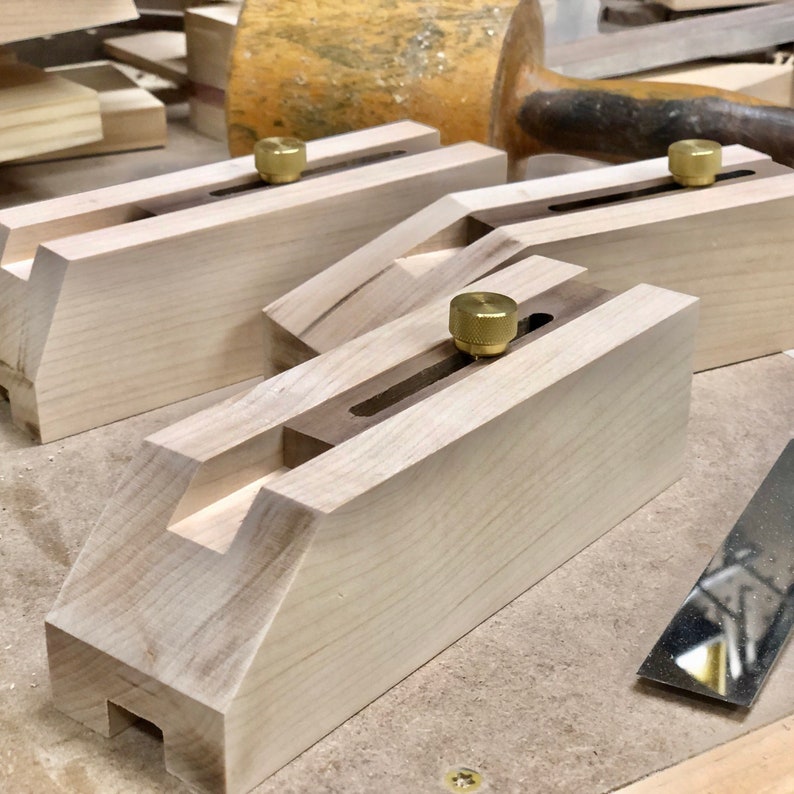Kumiko Jigs. The finished pattern should look like this. Stops are held in place with brass knurled knobs for quick.

The video instruction explains in detail how to make it happen. While searching through Instagram for Kumiko patterns, I came across some exciting Jig kits from ProWoodUkraine. An ancient form of Japanese latticework traditionally used in shoji screens and sliding doors, kumiko is created by assembling wooden slats into interlocking geometric patterns.
For cutting the groove I use a flat-top table saw blade and make. Learn woodworking, make a shooting board, learn Kumiko, build a router table and dovetail jig. The Asuka period was a time of intense political shifts in Japan, but it was also a time when the arts began.
Not only does Mike explain the process very clearly, there are great drawings, and his jigs for paring the infill pieces are the bomb, because they have stops to control how long the infill pieces are. What you dont' see is how those strips are milled, sized, smoothed and cut (with notches). Premium Kumiko Jig Kits from ProWoodUkraine.
The main variable is the pitch, which is the distance between the lap joints.
Steel threaded inserts and aluminum stops to adjust length. Make the strips a hair thicker than the width of the blade's kerf. Kumiko Jigs - Japanese Woodworking by JT Woodworks Kumiko is a traditional Japanese woodworking technique made of wooden strips to form various designs and patterns.
An ancient form of Japanese latticework traditionally used in shoji screens and sliding doors, kumiko is created by assembling wooden slats into interlocking geometric patterns. Now to cover a few problems that can arise when using kumiko jigs. The lamp frames were supposed to be a canvas for Kumiko patterns.
Each jig is handmade from hard maple or ash with walnut stops and all brass hardware. Online woodworking courses, classes and webinars derived from extensive woodworking and furniture making expertise. I also had specific dimensions that I.
Kumiko Jigs - Japanese Woodworking by JT Woodworks Kumiko is a traditional Japanese woodworking technique made of wooden strips to form various designs and patterns. Online woodworking courses, classes and webinars derived from extensive woodworking and furniture making expertise. Find out how to make these jigs here or watch a video here. and also in the.
An ancient form of Japanese latticework traditionally used in shoji screens and sliding doors, kumiko is created by assembling wooden slats into interlocking geometric patterns. If you enjoyed, consider subscribing!• Social Media Stuff-Instagram -. Kumiko blocks for the asa-no-ha pattern.
Kumiko Jigs - Japanese Woodworking by JT Woodworks Kumiko is a traditional Japanese woodworking technique made of wooden strips to form various designs and patterns.
Learn woodworking, make a shooting board, learn Kumiko, build a router table and dovetail jig. This was a fascinating period in Japanese history which shortly followed the introduction of Buddhism to Japan, as well as the nation debuting the name Nihon (loosely meaning land of the rising sun). I wanted to learn Kumiko, so it is high time I made the necessary tools!
Make the strips a hair thicker than the width of the blade's kerf. The Asuka period was a time of intense political shifts in Japan, but it was also a time when the arts began. Press question mark to learn the rest of the keyboard shortcuts The foundation of any kumiko pattern is the gridwork, which can be scaled to suit everything from large shoji screens down to door panels, lamp shades, and coasters.
These are specialized, expensive machines that don't exist outside of Japan. I wondered if, given the tools I have, there was a way to more efficiently make the lamp frame.. The Asuka period was a time of intense political shifts in Japan, but it was also a time when the arts began.
The only tools you need to provide are sharp chisel or block plane and a fine tooth hand saw. I wondered if, given the tools I have, there was a way to more efficiently make the lamp frame.. These are the three angles needed to make the asa-no-ha pattern.
These are the three angles needed to make the asa-no-ha pattern. These kumiko jigs are designed to be used with a chisel rather than a hand plane. You could then get Des King's books on.
Jigs feature a brass thumb screw with adjustable stop. Online woodworking courses, classes and webinars derived from extensive woodworking and furniture making expertise. Each jig has a stop that is adjustable with a brass thumb screw, and additional holes are drilled so the stop can be moved to.
There are no nails or metal fasteners of any kind. Kumiko blocks for the asa-no-ha pattern. Their premium Kumiko starter kit provides you with everything you need to make your Kumiko.
Each jig has a stop that is adjustable with a brass thumb screw, and additional holes are drilled so the stop can be moved to.
The thumbscrews make adjusting the stop for kumiko strips easy.
Find out how to make adjustable Japanese Kumiko jigs. The only hint are the machines that you can sometimes glimpse in the background. Fine Woodworking's Kumiko Cabinet-on-Stand Plan (Fine Woodworking Project Plans) by Michael Pekovich
Jigs feature a brass thumb screw with adjustable stop. Steel threaded inserts and aluminum stops to adjust length. Jumpstart your Kumiko making with the perfect kit for starters.
Here's is how I build the jigs. The video starts with lovely kumiko strips already cut and ready for assembly. I wanted to learn Kumiko, so it is high time I made the necessary tools!
For cutting the groove I use a flat-top table saw blade and make. If you enjoyed, consider subscribing!• Social Media Stuff-Instagram -. Online woodworking courses, classes and webinars derived from extensive woodworking and furniture making expertise.







